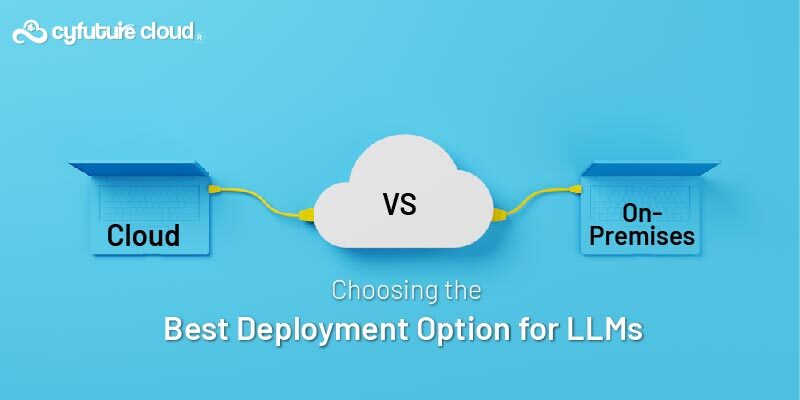Cloud disaster recovery (CDR) is a managed service or solution based in the cloud, designed to swiftly restore your organization’s vital systems post-disaster. It offers secure remote access to your systems within a virtual environment. There is a variety of specifications involved in cloud disaster recovery management.
- In contrast to traditional disaster recovery methods that involve managing a secondary data center, CDR eliminates the need for costly infrastructure and substantially reduces downtime.
- By leveraging the cloud, IT departments can achieve rapid spin-up and failover, resulting in quicker recovery times at a significantly lower expense.
- Cloud disaster recovery approaches traditional DR differently. Instead of using dedicated servers with specific configurations.
- Cloud disaster recovery captures the entire server image, including the operating system, applications, patches, and data, in a single software bundle or virtual server image. It is a good feature to consider.
- This image is stored and ready to be deployed during a disaster. The virtual server image in the cloud can be synchronized with the origin server during normal operations and quickly restored or spun up on a virtual machine within minutes.
Unlike traditional DR methods, the virtual server image is not tied to specific hardware, allowing for faster migration of the operating system, applications, patches, and data from a data center to the cloud. Now we have a brief understanding of cloud disaster recovery management, let us dive into the deeper concepts of this topic.
Defining Cloud Disaster Management (CDM)
Disaster recovery (DR) refers to an organization’s capability to restore IT infrastructure access and functionality following a disruptive event, whether caused by natural occurrences or human factors. It falls under the umbrella of business continuity, specifically focusing on swiftly bringing operational status to the IT systems that support critical business functions.
In today’s business landscape, comprehensive disaster recovery planning is essential, particularly for cloud-based operations.
Unexpected disasters leading to service interruptions and data loss can strike at any moment—a network outage, the release of a critical bug, or a natural calamity may impact your business.
Organizations equipped with robust and thoroughly tested disaster recovery strategies can minimize disruption, achieve faster recovery times, and swiftly resume core operations when faced with adverse circumstances.
Reason for Disaster Recovery Management Necessary
Technology plays an imperative role across all areas of business, empowering companies to enhance agility, availability, and connectivity through various applications and services. This shift has led to the widespread adoption of cloud computing as a means to drive growth, foster innovation, and deliver exceptional customer experiences.
However, the transition to cloud environments (public, private, hybrid, or multi-cloud) and the emergence of remote workforces introduce greater infrastructure complexity and potential risks. Ensuring disaster recovery for cloud-based systems becomes a crucial component of an overall business continuity strategy.
Any system breakdown or unplanned downtime can have severe consequences for enterprises heavily reliant on cloud-based resources, applications, documents, and data storage, impeding smooth operations.
Furthermore, compliance with data privacy laws and standards now necessitates organizations to have a well-defined disaster recovery plan. Neglecting to adhere to these plans can result in compliance violations and substantial regulatory penalties.
Regardless of industry or size, every business must have the ability to swiftly recover from any event that disrupts day-to-day operations. Without a comprehensive disaster recovery plan in place, companies risk data loss, reduced productivity, unexpected financial burdens, and damage to their reputation, potentially leading to customer and revenue losses.
The Working of Disaster Recovery Management
To achieve effective disaster recovery, a well-structured plan is essential to promptly restore critical applications and infrastructure following an outage, ideally within minutes.
A comprehensive DR plan encompasses three key elements:
- Preventive: This involves implementing measures to maximize system security and reliability, utilizing tools and techniques to prevent disasters from occurring. Examples include data backups and continuous monitoring of environments to identify configuration errors and compliance breaches.
- Detective: To ensure a swift response, it is crucial to detect and identify unwanted events in real-time. These measures focus on promptly recognizing and addressing potential issues as they arise.
- Corrective: These measures encompass planning for potential DR scenarios, implementing backup operations to minimize impact, and executing recovery procedures to swiftly restore data and systems when needed.
Typically, disaster recovery involves securely replicating and backing up critical data and workloads to secondary locations known as disaster recovery sites. These sites can serve as a means to recover data from the most recent backup or a specific point in time. In the event of a failure at the primary location, organizations can switch to utilizing the DR site until the primary site is restored.
Types of Disaster Recovery Management (DRM) Strategies
The types of disaster recovery you’ll need will depend on your IT infrastructure, the type of backup and recovery you use, and the assets you need to protect.
Here are some of the most common technologies and techniques used in disaster recovery:
Backups: With backups, you back up data to an offsite system or ship an external drive to an offsite location. However, backups do not include any IT infrastructure, so they are not considered a full disaster recovery solution.
Backup as a Service (BaaS): Similar to remote data backups, BaaS solutions provide regular data backups offered by a third-party provider.
Disaster Recovery as a Service (DRaaS): Many cloud providers offer DRaaS, along with cloud service models like IaaS and PaaS. A DRaaS service model allows you to back up your data and IT infrastructure and host them on a third-party provider’s cloud infrastructure.
During a crisis, the provider will implement and orchestrate your DR plan to help recover access and functionality with minimal interruption to operations.
Point-in-Time Snapshots: Also known as point-in-time copies, snapshots replicate data, files, or even an entire database at a specific point in time. Snapshots can be used to restore data as long as the copy is stored in a location unaffected by the event. However, some data loss can occur depending on when the snapshot was made.
Virtual DR: Virtual DR solutions allow you to back up operations and data or even create a complete replica of your IT infrastructure and run it on offsite virtual machines (VMs). In the event of a disaster, you can reload your backup and resume operation quickly. This solution requires frequent data and workload transfers to be effective.
Disaster recovery sites: These are locations that organizations can temporarily use after a disaster event, which contain backups of data, systems, and other technology infrastructure.
Singling-Out the Benefits of Disaster Recovery
Robust Business Continuity
When your business experiences downtime, every passing moment is critical as it affects productivity, customer experience, and your company’s reputation. Disaster recovery plays a crucial role in protecting vital business operations by ensuring they can swiftly recover with minimal or no interruption.
Enhanced Security
Disaster recovery plans to employ data backup and additional procedures to enhance your security measures and mitigate the impact of attacks and other security risks. Cloud-based disaster recovery solutions provide many things.
For instance, provide inherent security features, including advanced encryption, identity and access management, and adherence to organizational policies. These measures collectively bolster your security posture and safeguard your business operations.
Faster Recovery
Disaster recovery solutions simplify the process of restoring your data and workloads, enabling swift recovery of business operations following a catastrophic event. DR strategies utilize data replication and frequently employ automated recovery methods to minimize both downtime and data loss. This ensures a prompt return to normal operations and reduces the impact of the disruptive event.
Reduced Recovery Costs
The financial consequences of a disaster event can be substantial, encompassing business and productivity losses, data privacy penalties, and potential ransom expenses. Implementing a disaster recovery strategy allows you to mitigate, or even prevent, some of these costs.
Additionally, leveraging cloud-based disaster recovery processes can help reduce operating expenses associated with maintaining a secondary location for recovery purposes. This enables cost efficiencies while ensuring the necessary safeguards are in place to protect your business.
High Availability
Numerous cloud-based services offer robust high availability (HA) features that can bolster your disaster recovery (DR) strategy. HA capabilities guarantee a predetermined level of performance while providing built-in redundancy and automatic failover mechanisms.
This ensures data protection in the event of equipment failure or other minor incidents that could potentially affect data availability. By leveraging these HA features, you can enhance the resilience of your DR approach and maintain consistent access to critical data.
Better Compliance
DR planning plays a crucial role in meeting compliance requirements by assessing potential risks and establishing a set of tailored procedures and safeguards for your data and workloads in case of a disaster. Compliance with pre-defined regulations becomes even more prudent during times of crisis.
This typically involves implementing robust data backup practices, setting up dedicated DR sites, and regularly testing the DR plan to ensure your organization is well-prepared. By diligently adhering to these practices, you can ensure compliance while effectively safeguarding your critical assets.
Conclusion: In today’s fast-paced business landscape, cloud disaster recovery management has become an essential requirement for most organizations. The ability to swiftly recover critical systems and data in the event of a disaster is paramount to maintaining business continuity, protecting customer experience, and upholding reputation.
By leveraging the power of cloud-based solutions, businesses can minimize downtime, mitigate financial losses, and confidently navigate the challenges posed by unforeseen disruptions. Embracing cloud disaster recovery is no longer a luxury but a necessity to thrive in the ever-evolving digital landscape.
Send this to a friend

 Server Colocation
Server Colocation CDN Network
CDN Network Linux Cloud Hosting
Linux Cloud Hosting Kubernetes
Kubernetes Pricing Calculator
Pricing Calculator
 Power
Power
 Utilities
Utilities VMware Private Cloud
VMware Private Cloud VMware on AWS
VMware on AWS VMware on Azure
VMware on Azure Service Level Agreement
Service Level Agreement 



















